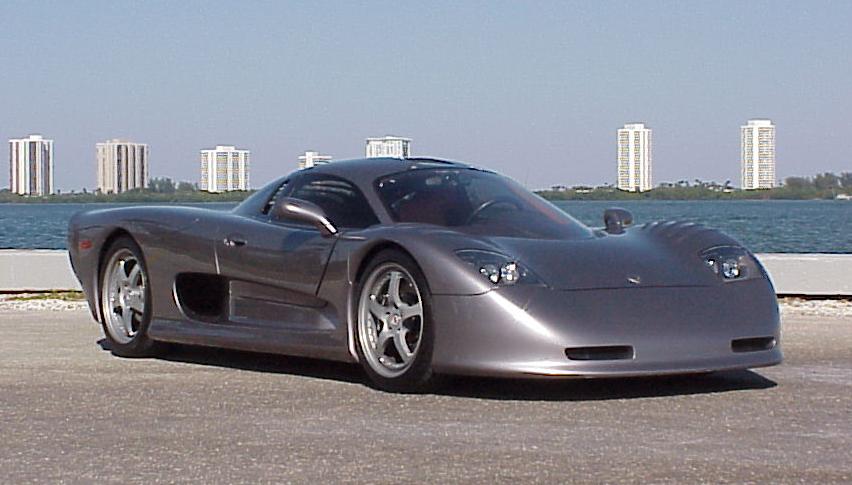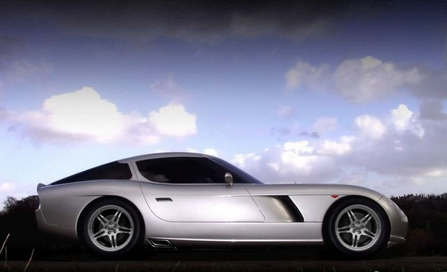
Power in the hands of a few, this is the slogan of the twenty year old company called Saleen. They specialize in the design and production of high performance vehicles for the road and track. They were first know known for tricking out mustangs, but then Steve Saleen, the founder, created a car unlike any other on earth. He created
America's first, and so far only mid engine exotic super car. The Saleen S7.
As you ease into the throttle, the S7 surges forward with the effortless ease created by 750 horses pushing against just 2968 pounds of car. With 427 cubic inches of V-8 derived from Ford’s NASCAR engines and pressurized by two Garrett turbo-blowers working at a mild 6 psi, the engine generates enough thrust to scare you at just about any rpm. Floor the throttle when you’re rolling along in first gear on a dry, straight road, and the engine fries the rear tires when the boost comes up. On a winding road, it doesn’t much matter whether you run in second, third, or fourth gear because there’s enough power in any of them to summon big-time oversteer if you’re clumsy in a corner.
For the S7, the redesigned front and rear diffusers, along with the new rear spoiler, result in a 40 percent reduction in aero drag and a 60 percent increase in down force. Typically, you would have to trade down force to reduce aero drag. What this increase in down force allows the car to do is stick to the road more effectively. It works so well that at 140 MPH the downforce in Lbs. is equal to the cars weight, meaning if you had a road that went upside down, it would be able to drive on it.
Unless you place the new S7 Twin Turbo next to one of the original 2002 models, you probably won’t notice that the 2005 version has a different rear spoiler package and reshaped front fenders to enhance the S7s already sleek, swoopy and aerodynamic contours.


































